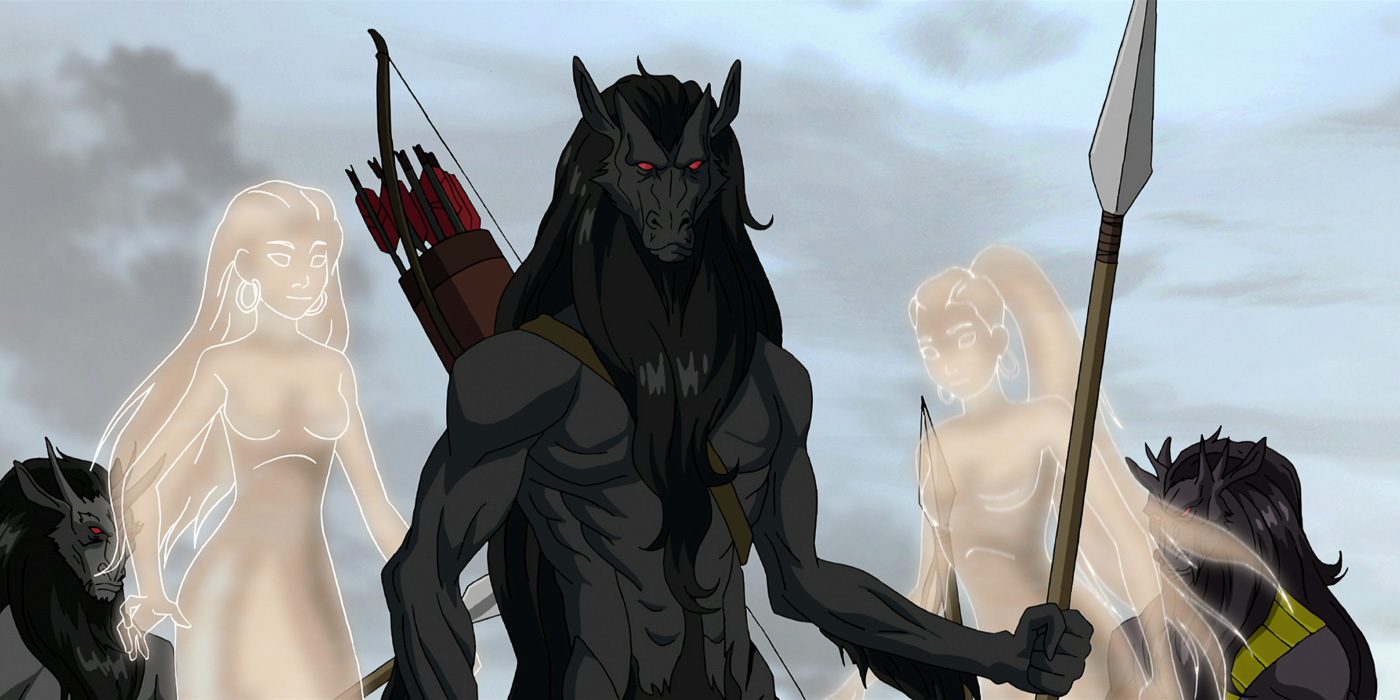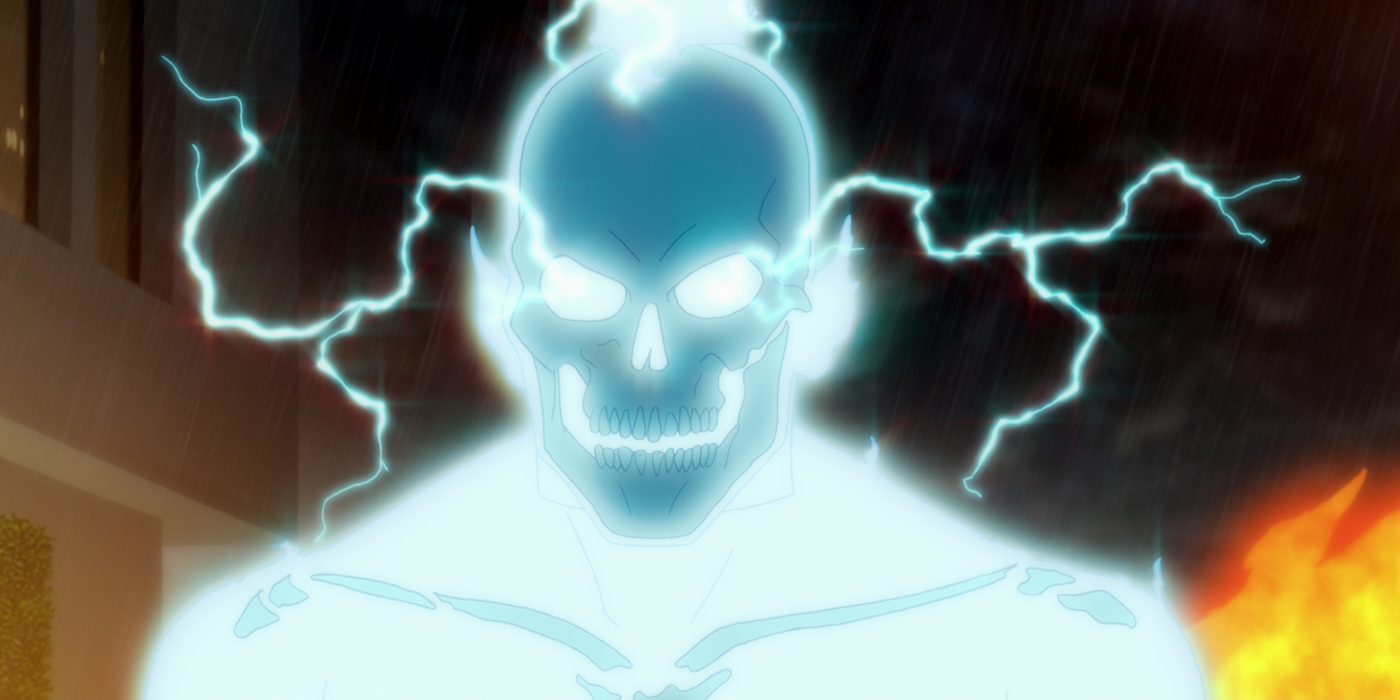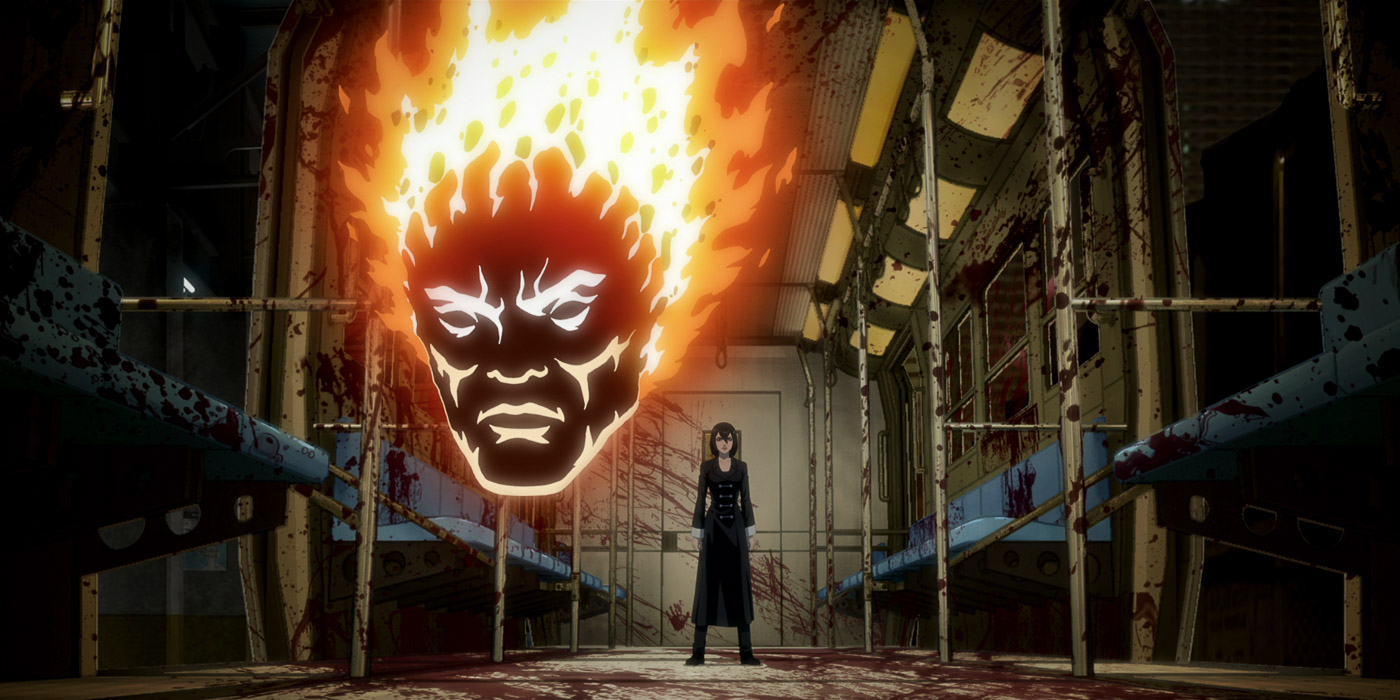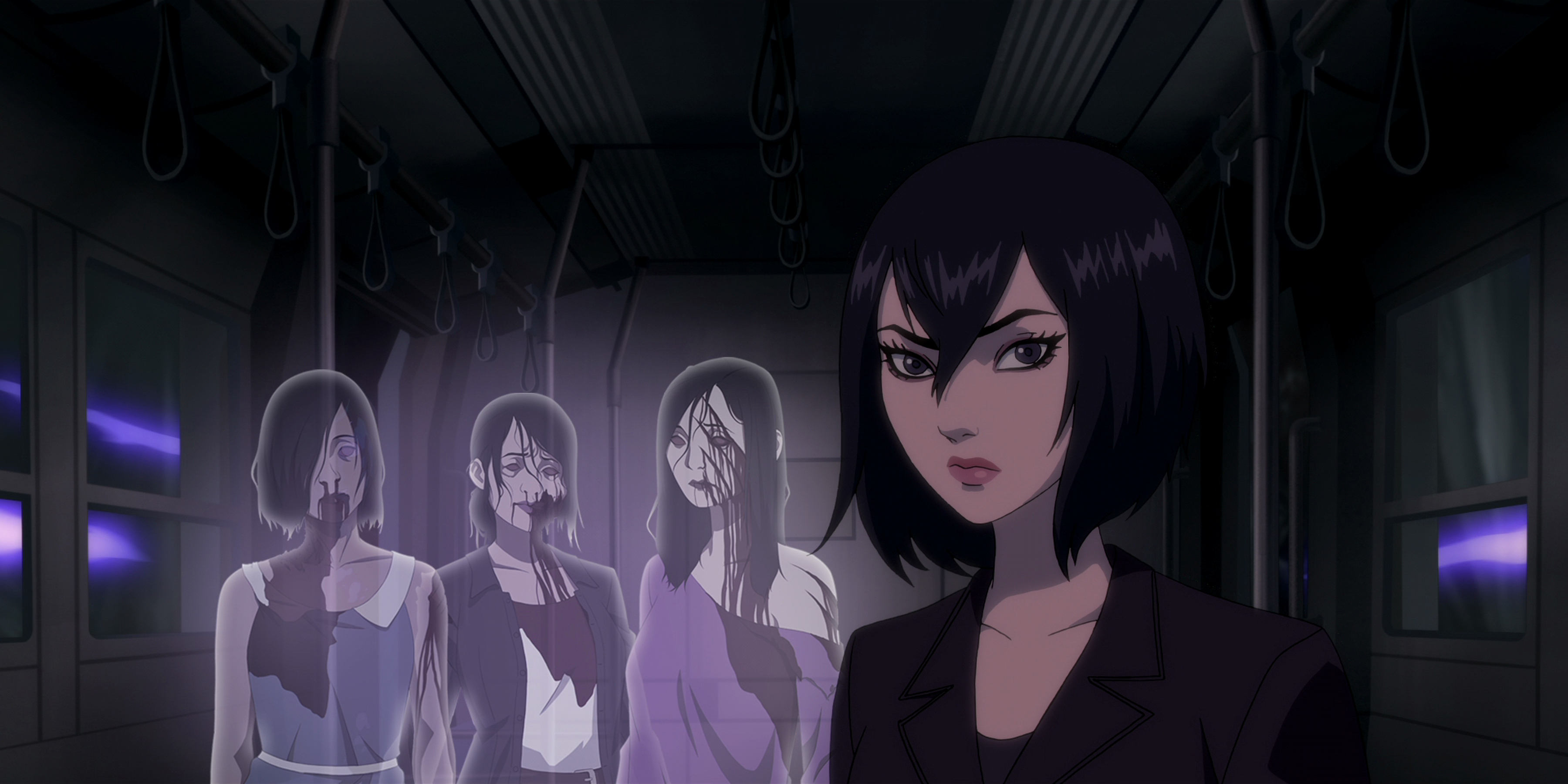SUMMARY
This is AI generated summarization, which may have errors. For context, always refer to the full article.

After a near three-year wait, Netflix began streaming Trese, its first original animated series based on a Philippine comic.
The animated series, set in Manila, follows Alexandra Trese, an investigator who solves crimes involving supernatural entities. The show is based on the award-winning graphic novel by Budjette Tan and Kajo Baldisimo.
Here’s a deeper dive into the origin stories and lore behind the characters in the show, based on Trese’s production notes and research on Philippine mythology:
Lakan ng Sangkatauhan
Alexandra Trese, like her ancestors before her, is the Lakan ng Sangkatauhan or the protector of the city. It’s a role that’s been passed down her family for generations. It’s her responsibility to uphold the Accord, a peace agreement between the human race and the different tribes of the supernatural world.

In the series, she’s also referred to as a babaylan. According to the Center for Babaylan Studies, babaylan are mediators to the spirit world and have the gift of healing, foresight, and divination.
Talagbusao
Talagbusao is one of the main antagonists of the comics series and is the father of Alexandra Trese’s twin protectors, the Kambal.
The deity is a war god originating from Bukidnon. According to anthropologist Felipe Jocano, Talagbusao or Busao was a lesser divinity working for Magbabaya, the highest ranking deity in Bukidnon.
Talagbusao was the most feared deity serving under him and was also known as the god of calamity.
Bagyon Kulimlim and Bagyon Lektro
Kulimlim and Lektro are both lightning elementals hailing from the Bagyon tribe. In Trese’s Manila, they operate the Maharlika Electric Company.

While there are no direct references to either characters in Philippine mythology, they could be based on a few deities associated with lightning.
There’s KiLat, the Kalinga god of lightning, who serves under Kabunian.
There’s also the Ifugao deity called Ovug. According to the late Francisco Demetrio, who authored books on Philippine folklore, Ovug was born from the god Dumagid and the human Dugai. Dumagid, who lived in the skyworld, often went down to live among the people, and on one occasion fell in love with a human. They got married and became parents to Ovug. When Dumagid had to go back to the skyworld, the people urged him to take his wife with him and leave his son to them. As traveling to the skyworld was too hot for a human, Dugai died.
Later, when Dumagid went back down he urged the people to let him take his son with him but they still refused, so the god cut his son in half, giving them one half to keep. In the skyworld, Dumagid reanimated the part of Ovug he brought home. When he later saw that the half given to the people wasn’t being used, he came down with the reanimated half from the skyworld to reanimate the half left on Earth.
He then made the two full versions of Ovug talk, startling locals. It’s believed that thunder, lightning, and the sounds generated by thunder, can be traced back to Ovug.
Santelmo
In the komiks, the Santelmo can be willingly summoned as fire elementals used to attack. Alexandra summons the Santelmo using her phone.

According to the late Dr. Maximo Ramos, who wrote a series of books on Philippine legends and folklore, the santelmo in Philippine mythology are balls of fire that follow wanderers and fishermen at night. They can also transform into beasts with fire in their mouth. They are known to be spirits that wander around because they have nowhere to go or cannot find their way back.
The Aswang Project traces the santelmo to several narratives in folklore. You can check them out here.
The Emissary and Ibu
This shady masked lady is a subject of Ibu, the goddess of death. Called the Emissary, she appears with messages from the Court of Death.
Ibu is a goddess from the Manobo people. According to John M. Garvan’s book, The Manobos of Mindanao, Ibu is the ruler of the deceased mortals who live in the underworld.
The people of the indegenous group used to offer their dead to Ibu in their most clean and best dressed form. They also extend invitations for the inhabitants of the underworld during a feast for the dead. The babaylan is the one that presides over this feast.
Nuno
Have you everbeen told by elders to say “tabi tabi po” whenever you pass by anthills or soil mounds to pay respect to the nuno?
In the released Trese trailer, Alexandra mutters the phrase before being greeted by the creature – who wears the circular metal cover as a hat – as it emerges from a dingy and grimy city manhole.

In local Tagalog literature and oral history, however, nuno are known to dwell in small mounds of soil called punso. Those who disturb their homes are believed to experience terrible illnesses like headaches, high-grade fevers, and even swelling of the genitalia for those who pee near their homes.
Fed up with the amount of litter and pollution around its usual anthill, nuno sa manhole in the anime series relocates to the Metro at the intersection of 13th street and Balete Drive.
Tikbalang
These part-man, part-horse creatures are widely known in most parts of the Philippines. Possessing the face of a horse, the body of a human, and horse hooves, these mysterious, buff hybrides prowl in the forests at night to look for women they can impregnate to bear their descendants, according to the late Damiana Eugenio, the “master compiler of Philippine folkloric literature.”

When it comes to speed, strength, and ferocity, the tikbalang stands out. In Trese, Maliksi (which literally translates to “agile” in Tagalog) is a fine and furious tikbalang warrior and son of a prominent tikbalang clan leader from Bukidnon. A well-trained runner with superhuman speed, he faces Alexandra in a fiery drag race in exchange for a prize.
Tiyanak
The first case that features a tiyanak in the original Trese comic is the Embrace of the Unwanted, the seventh case in the series. In the two-minute official trailer, Alexandra is seen on the phone with Hank, a trusted ally, as they hurriedly look for this undead infant.
Local tradition says tiyanaks are made from aborted fetuses or from dead children willfully left and buried in the forests. These flesh-eating creatures also possess the power of deception. They masks their vampiric nature by crying sobbing in forests or dark alleyways. Once they’re picked up, they unveil their true bloodthirsty nature and attack their prey with their sharp fangs and claws.
Duwende
Traditionally, Filipinos consider duwende as lamanlupa or earth elementals who can bring either good luck or misfortune, depending on their moods or how they are treated.
Dr. Maximo Ramos, known as the “Dean of Lower Philippine Mythology,” said these playful creatures dwell in soil mounds and anthills (like the nuno) but can also be found in pots of plants, old trees, and underground. You must also say the phrase “tabi, tabi po” as a sign of respect when passing by their homes or else you might end up going to the albularyo or folk healers to cure ailments they inflict upon you.
To gain their favor and affection, in the Trese graphic novel, one must offer candies and sweets. They seem to favor iconic local candy Chocnut.
Kapre
Standing between seven to nine feet tall, the kapre is known for its chain-smoking, love for huge cigars, and beautiful women. They’re usually depicted atop balete or acacia tree branches.
If you smell a very foul odor with a hint of burning tobacco and feel a bit disoriented, it’s might be because you’ve caught a kapre‘s attention. A simple solution for this, according to local superstition, is to wear your shirt from inside out.
According to renowned Filipino anthropologist F. Landa Jocano, these hairy and dark beings are quite passive compared to other mythical creatures. But they can also be maleficent and unforgiving forces to be reckoned with if you do them harm – especially if you cut the tree they’re inhabiting.
When Alexandra was baptized, the kapres made offerings and gifts of cigars to her. They would later support her in her bid to solve crimes of supernatural origins.

Based on the award-winning graphic novel of writer Budjette Tan and illustrator Kajo Baldisimo, Trese’s lead protagonist Alexandra is voiced by Liza Soberano for the Tagalog language dub and Shay Mitchell for the English language version.
The anime series is led by director, producer, and showrunner Jay Oliva.
Trese is now streaming on Netflix. – Rappler.com
Adrian Soriano and Paolo Alejandrino are Rappler interns.
Add a comment
How does this make you feel?
There are no comments yet. Add your comment to start the conversation.